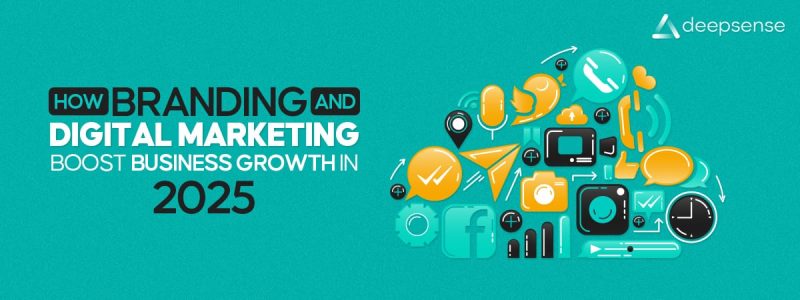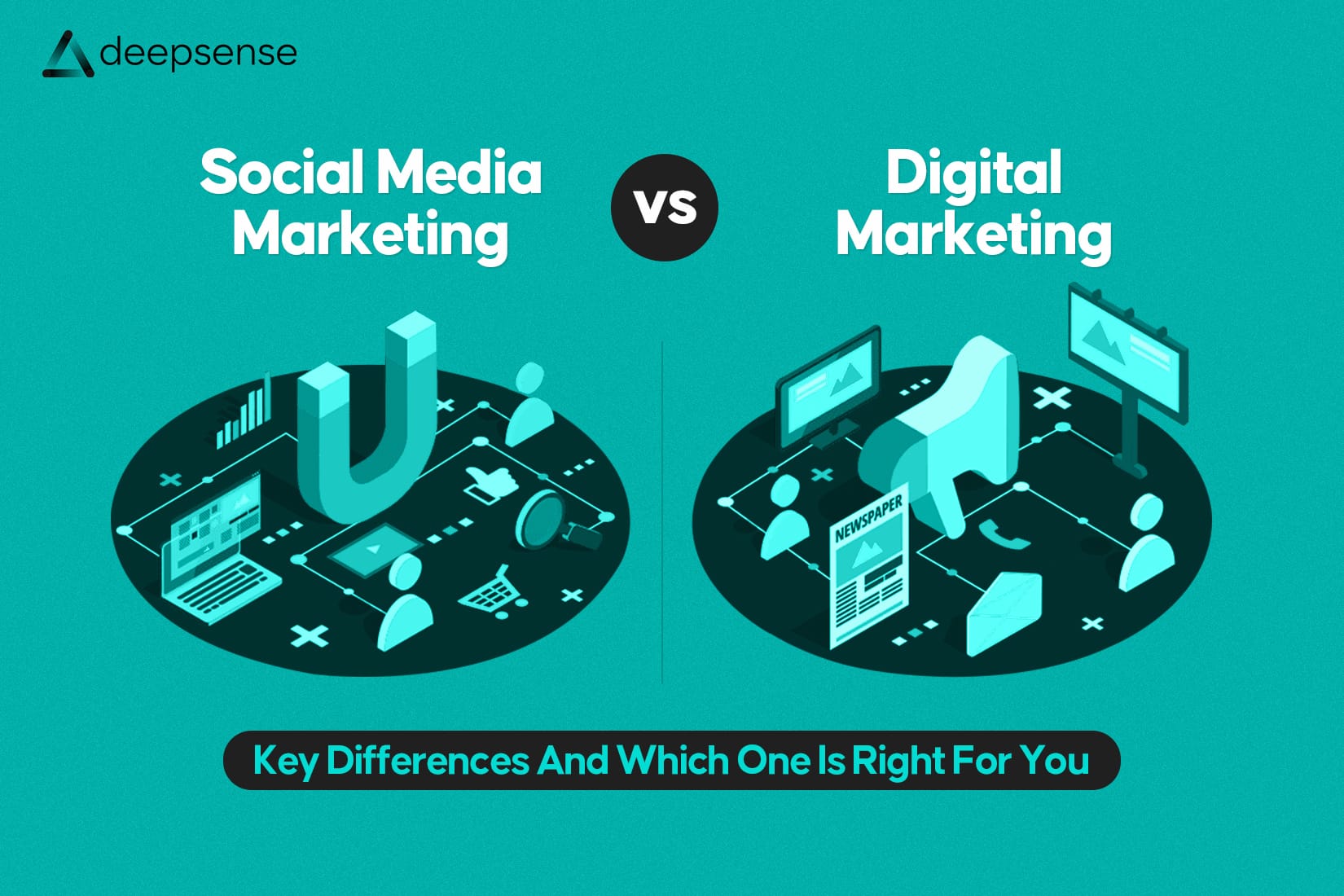How Predictive Analytics is Rewriting the Future Marketing Trend
Shopping has completely transformed over the years. We are no longer just walking through malls, visiting retail stores, or browsing traditional e-commerce sites. Instead, we are scrolling, swiping, and tapping our way through purchases right on social media E-commerce. That is the power of social commerce, where shopping and social networking come together.
And make no mistake, social commerce is not just another passing trend. It marks a major shift in the way brands connect with consumers and how people make buying decisions. Platforms like TikTok, Instagram, Facebook, Pinterest, and even YouTube have completely blurred the lines between content and commerce. Today, discovering a product, getting influenced by a creator, and making a purchase all happen seamlessly within the same platform.
In this blog, we are going to take a closer look at how social media marketing has evolved, how the biggest platforms are reshaping the retail experience, some key stats you need to know, tips for brands to stay ahead, and a glimpse into what the future might look like.
Understanding Predictive Analytics in Marketing
At its core, predictive analytics involves using historical data, statistical algorithms, and machine learning techniques to identify the likelihood of future outcomes based on past patterns. In marketing, it means being able to forecast future buying behaviors, market demands, campaign performance, and even customer lifetime value.
Traditional analytics could only tell businesses what had already happened. Predictive analytics takes it a step further, telling businesses what will likely happen next. This subtle but powerful shift allows marketers to proactively adapt strategies, allocate resources smarter, and craft campaigns that resonate with audiences before they even realize their needs.
The integration of AI has taken predictive analytics to an entirely new level. Artificial intelligence automates data collection, improves pattern recognition, and refines predictive models continuously without human intervention. It turns slow, manual analysis into real-time, actionable foresight.
The Core AI Technologies Powering Predictive Analytics
To truly understand how predictive analytics works today, we need to look at the technology stack that powers it.
Machine Learning Algorithms
Machine learning in search results is the backbone of predictive marketing analytics. Algorithms such as regression analysis, decision trees, neural networks, and clustering models enable systems to learn from massive datasets and improve prediction accuracy over time. These models are trained on past consumer behaviors, campaign results, and market shifts to make highly accurate future predictions.
Natural Language Processing (NLP)
NLP in AEO allows AI to interpret and analyze text-based data from social media posts, reviews, customer feedback, and surveys. It helps in detecting emerging trends, understanding customer sentiment, and predicting shifts in consumer preferences based on linguistic patterns.
Big Data Analytics
Today’s marketers have access to overwhelming volumes of data. Big data technologies such as Apache Hadoop and Spark process, sort, and structure this data quickly, making it accessible for real-time predictive modeling.
Deep Learning
Deep learning, a subset of machine learning, uses complex neural networks to analyze unstructured data such as images, videos, and voice. This capability is crucial for analyzing consumer behavior across visual and voice-enabled platforms.
Automated Machine Learning (AutoML)
AutoML simplifies the traditionally complex process of building machine learning models. It allows marketers with limited technical expertise to generate predictive models easily, making AI-powered insights more accessible than ever.
Why Predictive Analytics Matters for Modern Marketers
Let’s get to the real-world applications. Predictive analytics is not just a theoretical concept. It is actively helping businesses transform their marketing strategies in several keyways:
Personalized Customer Experiences
Predictive analytics enables brands to move beyond broad demographic targeting to hyper-personalized messaging. It identifies individual preferences and behaviors, allowing marketers to craft tailored offers, recommendations, and communications that are highly relevant to each customer.
Amazon’s recommendation engine is a perfect example. By predicting what customers are likely to buy next based on past purchases, Amazon creates a frictionless shopping experience that drives higher sales.
Smarter Lead Scoring and Nurturing
Not all leads are created equal. Predictive models can assess which leads are most likely to convert based on behavioral signals, engagement history, and demographic data. This empowers sales teams to prioritize high-value prospects and nurture them with highly targeted content.
According to a study published in ResearchGate, businesses using AI-enhanced lead scoring see a 20% improvement in conversion rates compared to traditional methods.
Accurate Sales Forecasting
Predictive analytics helps businesses forecast future sales with impressive accuracy. By analyzing past sales data, seasonal trends, and external factors such as economic indicators, marketers can predict demand spikes or slowdowns and adjust inventory, pricing, and promotions accordingly.
This predictive capability minimizes overstocking, prevents stockouts, and optimizes cash flow.
Optimal Campaign Timing
Predictive models can determine the best times to launch campaigns for maximum engagement. By analyzing when different customer segments are most responsive, marketers can schedule emails, social posts, and ads to achieve higher open rates, click-through rates, and conversions.
Reducing Customer Churn
Predictive analytics can identify customers who are at risk of leaving by detecting early warning signals such as declining engagement, negative feedback, or changes in purchasing behavior. Marketers can then implement proactive retention strategies, such as loyalty programs or personalized outreach, to reduce churn and protect revenue.
Key Industry Statistics That Highlight the Impact
Several studies confirm the rising importance of predictive analytics in marketing:
- According to CoSchedule, 80% of marketers believe that predictive analytics will be critical to future marketing success.
- Businesses using predictive analytics are 2.9 times more likely to report revenue growth above the industry average.
- Research from Orion Journals shows that companies implementing AI-driven predictive analytics have improved their customer engagement metrics by over 35% within the first year of adoption.
- Predictive analytics is projected to drive $274 billion in business value by 2025, according to a forecast from Markets and Markets.
Clearly, predictive analytics is no longer optional. It is becoming the foundation for modern, competitive marketing strategies.
Practical Tips to Implement Predictive Analytics Effectively
If you are considering adopting predictive analytics into your marketing strategy, here are a few expert recommendations to ensure success:
Start With High-Quality Data
Predictive models are only as good as the data they are trained on. Invest in proper data collection, cleansing, and normalization processes. Ensure your data sources are reliable, current, and comprehensive.
Define Clear Business Objectives
Before diving into predictive modeling, define what you want to predict. Are you forecasting sales? Identifying churn risks? Predicting campaign performance? Clear objectives guide model selection and data prioritization.
Choose the Right Tools
There is a wide range of predictive analytics platforms available, from enterprise-grade tools like IBM SPSS and SAS Analytics to more accessible solutions like HubSpot Predictive Lead Scoring and Salesforce Einstein. Choose a tool that fits your technical capacity and business needs.
Collaborate Across Departments
Predictive analytics should not live only within the marketing team. Work closely with sales, product, customer success, and data science teams to ensure a holistic view of customer behavior and market dynamics.
Embrace Continuous Learning
Predictive models need to evolve as customer behaviors change. Regularly update your models with new data. Experiment with different algorithms. Keep an eye on emerging trends in AI and machine learning.
Interesting Facts About Predictive Analytics
Before we wrap up, here are a few fascinating insights about the world of predictive analytics:
- Netflix saves over one billion dollars annually by using predictive analytics to personalize recommendations and reduce customer churn.
- Predictive analytics was first used during World War II for predicting the trajectory of enemy missiles, long before it entered the business world.
- More than 60% of marketers plan to increase their investment in predictive analytics technologies in the next two years, according to a report by Gartner.
These facts show just how deep and transformative predictive analytics can be across different industries and use cases.
Final Thoughts: The Predictive Future Is Now
The future of marketing belongs to those who can see it around the corner. Predictive analytics powered by artificial intelligence gives marketers that superpower. It is no longer about guessing what customers might want. It is about knowing with a high degree of certainty and acting on those insights before competitors do.
As AI models continue to improve and big data becomes even more integral to business strategies, predictive analytics will move from a competitive advantage to a baseline expectation. Marketers who embrace it now will not just survive future market shifts. They will thrive and lead.
Predictive analytics is not just forecasting the future. It is creating it.
FAQs
1. How is AI used in predictive analytics?
AI is used in predictive analytics by analyzing historical data, identifying hidden patterns, and using machine learning models to forecast future outcomes. It processes vast amounts of data much faster than humans, helping businesses make accurate predictions about customer behavior, sales, risks, and market changes.
2. What is the role of AI in predictive analytics for market trends and consumer demand?
AI enhances predictive analytics by quickly spotting shifts in consumer preferences and market dynamics. It enables businesses to forecast demand more accurately, plan inventory, adjust marketing strategies, and launch new products at the right time, staying ahead of competitors and meeting customer expectations efficiently.
3. What are predictive analytics for market trends?
Predictive analytics for market trends involve using historical data, statistical algorithms, and machine learning to predict future market movements. It helps businesses anticipate shifts in customer behavior, buying patterns, and industry developments, allowing them to make proactive strategic decisions.
4. How to use AI to predict trends?
To use AI to predict trends, businesses feed historical and real-time data into AI models, which then identify emerging patterns and forecast future behavior. Companies can track consumer sentiments, product preferences, and competitor activities to adjust strategies and capitalize on upcoming opportunities.
5. How is AI used in marketing analytics?
AI is used in marketing analytics to segment audiences, personalize campaigns, optimize ad spend, predict customer lifetime value, and measure campaign performance. It delivers deep insights into customer behavior, automates reporting, and improves targeting, helping marketers make data-driven decisions quickly and accurately.
6. What is the role of AI in forecasting?
AI plays a vital role in forecasting by analyzing massive datasets, recognizing patterns, and continuously learning from new data. It improves the accuracy of forecasts in areas like sales projections, inventory management, market demand, and financial performance, helping businesses plan better and reduce risks.











